Xanax Addiction And Abuse

Doctors may prescribe this medication to ease the symptoms of withdrawal. Having an addiction to a substance, such as Xanax or alcohol, is what experts refer to as a substance use disorder (SUD). If a person has an addiction to Xanax, they are unable to stop taking it, despite negative consequences. Get you or your loved one help for addiction or mental health issues today. Even if a person tries to stop taking Xanax, the fear of withdrawal and rebound can be so strong that the adverse consequences of stopping seem to outweigh the benefits. Xanax addiction is specifically part of a subcategory of substance use disorder known as sedative, hypnotic, or anxiolytic use disorder.
Can Valium help with Xanax withdrawal symptoms?
For instance, someone taking Xanax for anxiety is likely to have a reoccurrence of their anxiety symptoms during withdrawal. Xanax is a high-potency drug, which makes its withdrawal symptoms more intense than symptoms of withdrawal from other types of benzodiazepines such as Valium (diazepam). Quitting cold turkey can increase your risk of extreme and dangerous withdrawal xanax addiction symptoms, including delirium and grand mal seizures. If you have been taking Xanax several times a day, then quitting is going to take time, patience, and determination. The only safe way to quit is to slowly taper down your dose under the direction of a doctor. Xanax can help people who are in acute distress, but it is not intended for long-term use.

Post-acute withdrawal syndrome (PAWS)

70% of teens with a Xanax addiction get the drug from their family’s medicine cabinet. You don’t have to wait to seek help for substance abuse issues until experiencing something as dangerous and extreme as an overdose. Xanax generic form, alprazolam, is one of the most prescribed psychotropic drugs in the US. According to a national data report, 48 million prescriptions of this drug were given in 2013.
How Long Does Xanax Withdrawal Last?
- Additionally, some people are predisposed to substance addiction, possibly due to genetic factors and altered activity of neurotransmitters in the brain.
- Alprazolam is given in relatively higher and frequent doses compared to some similar drugs due to its short half-life.
- Since Xanax can cause serious side effects and has a high potential for addiction on its own, it is extremely dangerous to mix Xanax with alcohol or other drugs, particularly opioids.
- Xanax works by increasing the effects of gamma-aminobutyric acid (GABA), a chemical that is made in the brain which produces calming effects.
- The long-term abstinence rates after recovering from Xanax addiction vary significantly.
It’s not just the numbers that are concerning, but the ease with which people slip into dependency. One day you’re taking a pill to quell a panic attack, and before you know https://ecosoberhouse.com/ it, you’re reaching for that bottle just to feel normal. When it comes to the long-term management of getting off benzodiazepines, there are two directions you can go.
Long-Term Impacts of Xanax Overdose
They may experience painful withdrawal symptoms when not using the drug and intense mental drug cravings. Xanax is a type of sedative that people use to treat conditions such as anxiety and panic disorder. However, this medication is prone to misuse, which can lead to addiction.
What Are the Xanax Rehab Programs?
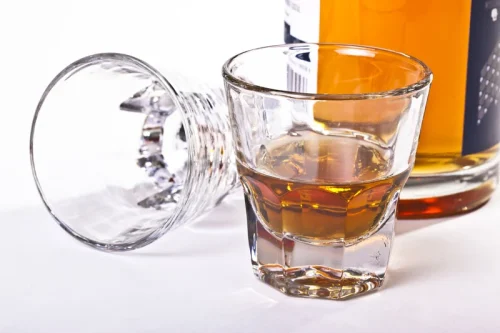
- However, the user should know as much as possible before entering into addiction treatment.
- A doctor can help a person determine the best course of treatment for them.
- What exactly rehab will look like depends on the facility and the patient.
- Imagine your brain as a finely tuned orchestra, with each neurotransmitter playing its part in perfect harmony.
- It mimics GABA, which produces a calming effect and blocks and regulates feelings of anxiety.

Xanax Addiction & Overdose Statistics
Vanderburgh Sober Living is a recovery-focused and peer supported sober living community
Vanderburgh Sober Living is also a Certified B Corporation, and the first organization to earn this award in Worcester. Applications are accepted on our website, as well as faxed, e-mailed, or over the phone. We carefully screen each application and conduct a telephone screen prior to approval to ensure a good fit in our homes. Sober homes offer an opportunity for men and women in recovery to live together and support each other while pursuing a new life in recovery.
Join our online community
Though members of elite, wealthy society, Frederick and Louise Vanderbilt lived graciously without spectacle. Hyde Park was a seasonal residence, one of a portfolio of homes the Vanderbilts owned in New York City, Bar Harbor, Newport, and the Adirondacks. Typical of the grand estates along the Hudson River, life at Hyde Park was rooted in the pleasures of the outdoors and genteel agrarian pursuits. House parties were leisurely and intimate, marked by games of golf or lawn tennis, carriage rides, and tea at neighboring estates.
Explore the National Park Service
We understand the challenges that a House Mentor faces every day, and we have many programs in place to support and encourage them – not only as a mentor, but as a man or woman in recovery themself. We have a comprehensive training program to equip them in handling guest concerns, house emergencies, and in their leadership of the recovery environment in the home. Sober homes screen guests for alcohol and drugs, enforce house rules and curfew, and each guest holds their brothers and sisters accountable. The development of a country estate for families of great wealth was a complex process, requiring numerous architects, landscapers, engineers, and decorators.
Vanderburgh County Council At-Large
Sober houses offer an important service to individuals in early recovery. When leaving treatment, many men and women have limited options. Independent living is difficult, and sober housing offers an attractive alternative to many options available to men and women in early recovery.
- He relishes talking about the endeavors his company is undertaking to help men and women try to shed the ruinous effects of alcohol and drugs.
- He leads a fantastic group of men in their recovery journey, offering support and encouragement to each guest.
- The Chamberlain Home in Southbridge is one of a number of sober living facilities Review Harbor House owns and operates in Massachusetts, Rhode Island and Maine.
- At Hyde Park, the Vanderbilts worked with no fewer than five building architects, four landscape architects, four interior decorating firms, and a “farm expert” to revitalize one of the most enduring country places in America.
- As is true of other sober living facilities, Review Harbor House requires abstinence from drugs and alcohol.
- Our free NPS App offers interactive maps, self-guided activities, and much more to enhance your visit.
In the construction of Gilded Age country houses, prominent architects like McKim, Mead & White, generally collaborated with an interior decorator. A further distinction is the rare overall carte blanche seemingly given McKim as chief architect on the design and furnishing of the ground floor reception rooms. The Vanderbilt Mansion is a home built expressly for the aristocratic lifestyle for a family whose name is the very definition of wealth and privilege. The children of William Henry Vanderbilt—at one time the wealthiest man in America—were the most prolific home builders of their era. The houses, often overbearing in their display of opulence, are a stark contrast to the stately house architects McKim, Mead & White designed for Frederick and Louise Vanderbilt at Hyde Park—an understated masterpiece of American design.
In the years that followed, Frederick lived quietly at Hyde Park, maintaining the house much as it was left after Louise’s passing. Without children of his own, he left the house to Louise’s niece, Margaret Van Alen. At the suggestion of Vanderbilt’s neighbor, President Franklin D. Roosevelt, Van Alen conveyed the house and furnishings along with 200 acres to the United Review Review Harbor House States government.
Ogden Codman would design Louise Vanderbilt’s suite, and Georges Glaenzer would design Mr. Vanderbilt’s bedroom, his office, the den, and the reception room. The formal rooms of the ground floor are arranged in a concise, classical plan. A large living room and corresponding dining room accentuate the north and south end of the transverse axis. In the race for Vanderburgh County Circuit Court judge, voters will choose between Molly Briles and Ryan Hatfield.
Alcohol Withdrawal: How to Get Through It
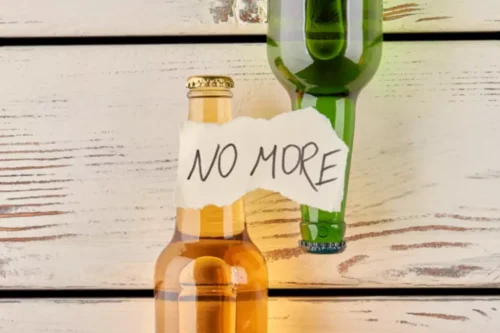
If you’re taking part in an event like FebFast, encourage your friends and family to sponsor you. Not only will it be good for the charity you are supporting, but it can make you more accountable. taking a break from alcohol It can also help you plan for situations where you’d usually be drinking. Nicole Lee works as a consultant in the alcohol and other drug sector and a psychologist in private practice.
Here’s What Happens to Your Body When You Stop Drinking for 30 Days

But if you’ve gone through alcohol withdrawal once, you’re more likely to go through it again the next time you call it quits. In the short term, alcohol is processed through your liver in about an hour. Essentially, feeling “drunk” is when your liver becomes too overwhelmed to properly process alcohol, so it overflows temporarily into your bloodstream. This is what causes you to feel light-headed or tipsy after multiple alcoholic drinks.
What are the long-term health benefits of not drinking alcohol?
Most people who try to moderate use without lowering tolerance do not find much success. You are already aware that it takes more alcohol to get the same buzz you used to get. As you build tolerance, you become quite skilled at acting relatively “normal” even though you may have a very high blood alcohol concentration (BAC). Students will engage in poor judgment or risky dangerous behaviors because they feel they are fine. In order to moderate use, temporary abstinence is the best way to get there. The most commonly used and recognized MAT for alcohol use disorders is naltrexone, taken orally or as an injection.
Make time for self-care
Because the liver is a tolerant organ, he said positive changes can occur within weeks of going dry. When your body breaks down alcohol, your liver has to clear the metabolic byproducts, Dr. Leavey says. “As a result, the liver has to work harder and longer to recover from the effects of alcohol,” he says. Alcohol can also cause inflammation in your liver, which keeps it from doing its job well—which is clearing out toxins from your body and turning fat into energy to keep you fueled, Dr. Galligan says.
What causes alcohol withdrawal?
Studies have shown that sponsorship leads to better treatment outcomes, and those in 12-step programs with sponsors have better attendance and more involvement in the group. Nora Volkow, director of the National Institute on Drug Abuse (NIDA), calls for alcohol problems to be identified whenever possible in the pre-addiction phase. During an exam, they’ll look for other medical conditions to see if they could be to blame. There are also certain foods like tea, fish and nuts that can benefit the liver’s function in many ways. Think of it as giving your liver a little boost in the right direction.
- Over time, it’s a driver of inflammation — and in heavy drinkers — sets the stage for cirrhosis.
- Taking a break at any time gives you a chance to evaluate your relationship with alcohol and allows you to gain an understanding of what is motivating you to drink and how it is impacting your life.
- If you stop drinking for a week, you might notice some positive changes in your gastrointestinal system.
- Still, try to keep in mind that these symptoms — though uncomfortable — are temporary.
Symptoms of Alcohol Withdrawal: Timeline and Signs of Danger

But maybe you’re unsure about quitting completely and don’t want to hold yourself to that goal. Becoming more aware of your alcohol triggers and reasons for drinking can help you plan ways https://ecosoberhouse.com/ to help manage the urge to drink. Knowing why you drink is essential, says Cyndi Turner, LCSW, LSATP, MAC, a Virginia therapist specializing in addiction treatment and alcohol moderation.
How do you detox your liver?

Taking a Break From Alcohol: Suggestions for 30 Days

Notre Dame Football: Predicting Entire 2024 Season on Game-by-Game Basis

Let’s find out from emergency medicine physician Thomas Waters, MD. While there is no cure for a hangover, there are many ways to reduce or relieve the symptoms. Talk with your healthcare professional before trying any alternative medicine. Your healthcare professional can help you understand possible risks and benefits before you try a treatment. With alcohol ingestion, the effects on the liver are generally long term effects that are not noticeable until years of liver damage have caused liver failure.
- Alcohol has a wide range of effects on your body, many of which contribute to hangover symptoms.
- But if inflammation is part of the reason hangovers happen, aspirin and nonsteroidal anti-inflammatory drugs (NSAIDs) might help.
- The only way to avoid a hangover is to limit how much you drink or to not drink alcohol at all.
I want to get healthier
In addition, decreasing the number of drinks decreases the severity of the hangover if one is experienced. In addition, it has also never been shown in a study that age affects the severity of hangovers. Rehydrating with fluids, most importantly water, and taking an over-the-counter pain medication like acetaminophen (Tylenol) or ibuprofen (Advil) will help with your symptoms.

What are the symptoms of a hangover?
If one is experiencing dizziness, then it may be helpful to drink water and lay down or sit still for some time. You might feel better for a little while if you have another drink in the morning, but you’re only postponing your symptoms. how long do hangovers last This phrase, by the way, dates to the days when people thought you could cure rabies by sipping a potion made from the fur of the beast that bit you. There is no cure for a hangover, but there are some treatment strategies.
- These severe symptoms could lead to big problems, including diabetic ketoacidosis (DKA), which is typically accelerated by dehydration, and can occur despite seemingly normal glucose levels.
- Clear liquors, such as vodka and gin, have comparatively lower concentrations of congeners.
- There are several factors that contribute to a hangover.
- If you’re planning on drinking, it’s important to know how your blood sugar is likely to react.
- Drinking can also affect your mood if you already have a mental health condition or use alcohol as a coping mechanism for your mental health.
Drinking fluids may help with the morning-after misery from getting drunk.
But there’s no research to back up the idea that electrolytes — whether you drink them or take them in through a vein in your arm — are a cure. In general, a hangover is highly unpleasant but not dangerous. While they generally resolve on their own after several hours, there are some strategies for managing a hangover. But they can cause major health issues, especially if you are not in good health to begin with. There are several factors that contribute to a hangover. Alcohol has temporary and long term effects on the body.

Intensity and Duration of Hangover Symptoms
Person-related factors


- The extract has a protein that curbs the inflammation you can get from drinking too much.
- Some people deficient in a protein called alcohol dehydrogenase 2 (ALDH2) may experience some symptoms similar to a hangover during intoxication.
- You likely want to know how to cure a hangover fast, but there’s only so much you can do to shorten how long you feel the symptoms of one.

RISE ABOVE SOBER HOMES 17 Photos Moreno Valley, California Halfway Houses Phone Number
Rules vary depending on each home or accrediting organization, but most sober living homes have several rules in common. Has been contributing to medical fields including mental health and addiction since she retired from medicine; with over 19 years of practicing clinical experience. If you are struggling with your sobriety, sober living facilities can be a great option. Explore options as soon as possible and get the help you need to live a sober, fulfilling life. If you feel joining a sober living home would be beneficial, consider reaching out to your network for recommendations.
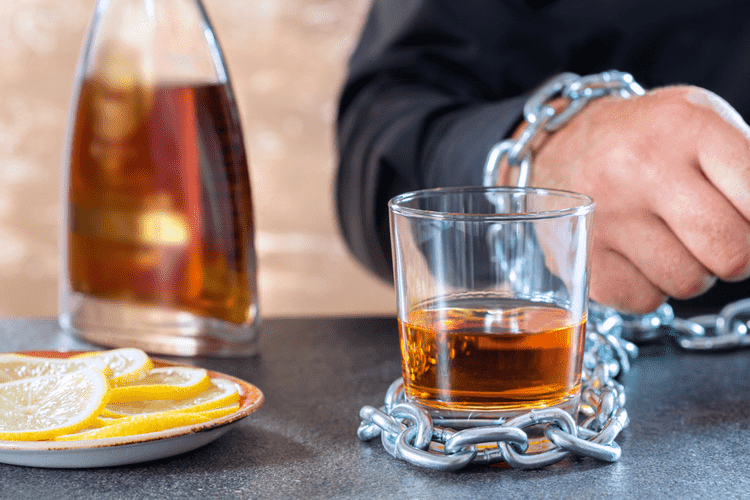
Unfortunately, relapse can occur anywhere, and relapses do occur in some sober living homes. Our mission is to foster long-term sobriety by creating a supportive environment where house members participate in each other’s recovery. We encourage everyone to reinforce positive lifestyle changes through adventure, support, and peer feedback. Try to choose a quality sober living home located outside of your hometown as well. Being farther away from the environment that initially drove an addiction can help individuals avoid relapse. Someone’s family and friends could become a barrier to recovery, or may even trigger relapse.
Level III: Supervised
Sober living homes are group homes in a controlled environment free from drugs and alcohol, created specifically for individuals recovering from addiction. Sober living homes help with the transition from inpatient and outpatient care, assisting individuals in their sobriety maintenance. These homes are often owned and operated privately but can also be owned and operated by businesses or charity organizations. All residents must remain sober and follow house rules to stay in the homes. Residents are also encouraged to continue seeking outpatient treatment and participate in a 12-step program.
Sober living houses are commonly mistaken for rehabilitation or treatment facilities. Both are important to those recovering from drug or alcohol abuse but play different roles. While sober https://accountingcoaching.online/mash-about-us/ living houses have research touting their efficacy, it is also important to remember that they are still environments where you are living with others and the focus is on staying sober.
Daily Activities in Sober Living Homes
In addition, you may find the family of the addicts in the house challenging to manage. Their “enabler” could be a friend, parent, or spouse that gets in the way of an individual’s recovery. Ask yourself questions about the type of residents How to Stop Sneezing: 10 Natural Remedies you want to attract and how you will vet applicants. It’s important to maintain a safe and comfortable environment that will attract new residents. Will you implement formal background checks, references, or application processes?
- They must also contribute to the community by helping with chores, taking responsibility for their actions, and respecting and obeying all house rules.
- Some SLHs offer intensive outpatient services, including on-site medical care.
- Sober living homes, sometimes referred to as transitional living arrangements, halfway houses, or recovery residences, can be a step down from formal substance use treatment programs.
- Many residents complete a rehabilitation program prior to approaching a sober living home, but this is not mandatory.
- Sober living homes may or may not be accredited or licensed through a state, local, or national agency.
What are the dangers and risks of alcohol and substance misuse? How can you prevent it? News
Because alcohol impairs your judgment and coordination, frequent drinkers face a higher risk of falls, drownings, motor vehicle crashes, and other accidents. When people want to relax or celebrate, they often turn to alcohol. This legal substance is one of the most popular drugs in the world. If you drink more alcohol than that, consider cutting back or quitting.

Most people don’t even call alcohol a drug because of its acceptance and accessibility in our society. Did you know that more people enter treatment facilities for alcohol misuse than any other drug? Of that 50%, the majority of alcohol is consumed by the top 10 percent. This means that Big Alcohol must sell to heavy, problematic drinkers.
Do you have a drinking problem?
Stress, ease of alcohol availability, and peer groups can increase the risk for alcoholism. While having a drink from time to time is unlikely to cause health problems, moderate or heavy drinking can impact the brain. Growing up around family members and close relatives that suffer from alcoholism increases the risk of alcohol abuse for generations to come. When you’re surrounded by people who drink excessively, you can look at alcohol use differently and fall victim to bad habits.
- Regular use of alcohol to the point of intoxication with altered judgment has the potential to cause significant and repeated harm.
- Studies have found that excessive drinking can reduce lifespan significantly.
- Antioxidants may help prevent heart disease by increasing levels of high density lipoprotein (HDL), or “good” cholesterol and protecting against artery damage.
- Multiple factors play a role in affecting the lifespan and mortality of people who use alcohol.
People who binge drink or drink heavily may notice more health effects sooner, but alcohol also poses some risks for people who drink in moderation. Lifestyle factors such as diet, exercise and smoking all combine to raise or lower your risk. Also, some of these conditions, such as esophageal cancer, are pretty rare, so increasing your risk slightly won’t have a huge impact. In observational studies, the heart benefits of those behaviors might have been erroneously attributed to alcohol, Dr. Piano said. The recommended daily limits are not meant to be averaged over a week, either. In other words, if you abstain Monday through Thursday and have two or three drinks a night on the weekend, those weekend drinks count as excessive consumption.
Alcohol withdrawal
Behavioral factors of AUD include binge drinking and heavy alcohol use throughout one’s day. AUD affects each culture differently, but African Americans are found to be the hardest impacted. Common health-related illnesses that stem from AUD but are prevalent in African American communities are liver disease, cirrhosis, hypertension, heart disease, oral cancer, stroke, and more.
Is 3 beers a day too much?
According to the National Institute on Alcohol Abuse and Alcoholism, drinking is considered to be in the moderate or low-risk range for women at no more than three drinks in any one day and no more than seven drinks per week. For men, it is no more than four drinks a day and no more than 14 drinks per week.
Drinking during pregnancy can have a severe impact on the development of the fetus and the baby’s health once born. Drinking during pregnancy can lead to complications that are collectively known as fetal alcohol spectrum disorders (FASDs). Alcohol dependence is a dangerous condition that develops when a person routinely uses this substance.
Birth Control Breakdown
Contact a treatment provider to help you find alcohol treatment programs. While every organ in your body can feel the effects from drinking, some are more at risk for extensive damage. The best way to prevent health issues now and in the future is to quit drinking with the help of a professional treatment program.
Accessibility and social pressure can be a dangerous combination. Any adult can go to a bar or a liquor store to purchase alcohol. While some states and cities may have restricted hours for when alcohol can be purchased or served, it is generally easy to Top 5 Questions to Ask Yourself When Choosing Sober House get a drink. Even teenagers are generally able to easily access alcohol, whether in their parents’ homes or from older siblings or peers. Alcohol abuse may not always include a very strong craving for alcohol, loss of control, or physical dependence.
Participating in ongoing treatment methods provides you with a greater chance for long-term sobriety than those who do not continue recovery with maintenance programs. Additionally, alcohol manufacturers are bombarding the general public with advertisements. Many of these ads show drinking as an acceptable, fun and relaxing pastime. In just four decades – between 1971 and 2011 – alcohol advertising in the United States increased by more than 400%. Alcohol abuse can quickly derail someone’s goals and dreams for the future. However, you don’t have to lose hope and continue down the path of destruction.
4 Ways I Stay Sober Without AA
If you need sober friends and don’t do support groups, Meetup has great local activities that will allow you to get out of the bars and meet people in positive environments. Acknowledging and celebrating the hard work of recovery is helpful for keeping you motivated and reminding you why you took this brave step toward sobriety in the first place. Just be sure that your rewards don’t involve drugs or alcohol. Instead, focus on things, experiences, and activities that will support your new, healthy lifestyle. Related to harm reduction, but also useful for complete sobriety, medications for alcohol use disorder are gaining increased popularity.
- “I made a note in my phone of all the reasons why I need to go sober and why I want to stay sober,” she says.
- These medications can help reduce alcohol cravings, helping people to either cut back or stay sober after they’ve quit.
Of all the things that support my sobriety, one of the most critical is knowing that there are sober people are all around me, inside and outside formal programs like AA. From my very first meeting, I learned a lot about addiction and how my addictive nature manifests. I worked with a sponsor and did the Steps, which gave me tons of invaluable insight into myself and my experience. By Buddy T
Buddy T is a writer and founding member of the Online Al-Anon Outreach Committee with decades of experience writing about alcoholism. Because he is a member of a support group that stresses the importance of anonymity at the public level, he does not use his photograph or his real name on this website.
Can You Actually Stay Sober Without AA?
Nevertheless, AA does have the best track record for success. Religious experiences and other self-help groups can also boast of providing substance to sobriety. Many alcoholics will become involved in church or civic activities to help them stay sober. It’s important to find the support and resources that work best for you. Whether you find support online, in person, or through other means, the most important thing is that you are taking steps to stay sober and live a healthy, fulfilling life.
- Revisiting those words now and again will mould you into a better person who can stay sober without AA.
- Religious experiences and other self-help groups can also boast of providing substance to sobriety.
- They’ll also provide emotional backing during difficult times.
Although it can’t help with medical detox, practically every other aspect of a well-rounded rehab program can be done through your phone. Not only is this much more flexible to your schedule, it’s also significantly more affordable. One of the strengths of AA is that it provides a community of people facing a similar challenge, and gives you access to others further along in the process. If you prefer not to attend AA, look for other ways to access this kind of community—whether that’s through other groups, a supportive social circle, or through a recovery coach or counselor. One of the challenges of getting sober with AA is about willpower. 12 step philosophy emphasizes surrendering control to higher power.
Can therapy be effective in helping me stay sober without AA?
It helps you find a power greater than yourself, and gets you involved in service with others in your community who need help. Whether or not you are interested in a spiritual program, finding something https://ecosoberhouse.com/ to live for (other than booze) can motivate your recovery. Whether this is some sort of spiritual program, giving back to your community, getting involved in recovery activism, is all up to you.
Options like naltrexone and disulfiram have been around for several decades, and there are now half a dozen effective choices in total. These medications can help reduce alcohol cravings, helping people to either cut back or stay sober after they’ve quit. What most people don’t know is that there are a lot of alternatives to AA.
Daniel Taddese: Leading Healthcare by Engaging, Enabling, and Supporting People
One of their top rules is all about sharing that philosophy without attacking another’s. If you’ve never participated on Reddit, then you might not know just how close-knit and supportive the people you meet online its thousands of “subreddits” can be. It’s important to remember that there are innumerable approaches to recovery, and whatever you choose to help you, you’re not alone. One common thread throughout all of their experiences is a sense of guilt and fear when they leave.
- If this perspective is a reason you want to stop drinking without AA, these won’t be suitable.
- They can help you decide what treatment methods are right for you.
- Depending on where you live or where the meetings are, AA groups might lean heavily toward one age, cultural background or gender.
- Have you thought about joining AA, but do not have transportation to travel to meetings?
As mentioned above, there are many ways to become and stay sober from alcohol; it is not a numbers game. 1000 people attending an AA meeting at a megachurch is just as powerful as a single person becoming sober on their own for one day. The program only works for some people, and refusing to change dismisses the larger group of people it doesn’t work for in its current form. The most common feedback I’ve received comes from people who want to be sober with others but do not want to partake in Alcoholics Anonymous. Recovery is a journey filled with progress, not perfection.
How To Quit Drinking Without AA
Granted, it was our first night in the country, and I was probably experiencing jet lag in addition to the effects of the booze. It was the exact kind of feeling that, prior to sobriety, I’d have drunk more to get rid of… Is my reaction to alcohol because I have an allergy to alcohol that sets off a physical craving for which there is no cure? The more recovered I got, the less sense it made to attribute aspects of my character simply to alcoholism. If you think you have a drinking problem, you should check out AA. Without a doubt, going to Alcoholics Anonymous meetings and being a part of the fellowship saved my life.
- They’re told they’ll stay stuck in the drinking cycle if they don’t go to AA meetings.
- Whether it is taking the stairs or walking to the store, you can make small changes in your life that will make you feel better.
- They can be particularly helpful if you believe you have underlying anxiety or depression you are managing with alcohol.
- You have to establish healthy boundaries and avoid high-risk situations.
- However, there are individuals who lack faith is this 12 step program which seeks to unite former alcoholics in the journey to recovery.
Typically, this means questioning brands that sell T-shirts that say “Wine is My Valentine” or questioning why something like “Rage Yoga” (which involves drinking beer) even exists. Grace Roy, 18, began writing while receiving treatment in hospital in a bit to share her experience. Dean recommends having fun making festive alcohol-free cocktails and getting your friends and family involved. And even having getting sober without aa a drink in a Champagne flute or wine glass can go a long way to making an alcohol-free alternative feel more Christmassy. “I think everyone has a very big fear that you stop drinking and your social life stops,” says Tom, who hosts the They Think It’s All Sober podcast with Jamie. If there’s a time when your willpower might be tested, chances are it will happen when people around you are drinking.
Sober Mom Squad
Fortunately, if AA doesn’t work for you, there are other choices. Different support groups exist to help you quit drinking without AA, some with a more secular approach. Rehabilitation centers, also known as rehab centers, are facilities that provide treatment for individuals with substance use disorder. Rehab centers can offer a range of treatment methods, including counseling, therapy, and medication-assisted treatment. Inpatient rehab programs can provide individuals with a supportive environment that can help them maintain Sobriety. It doesn’t mean they’ll never maintain long term sobriety, that they’ll never successfully stop drinking.
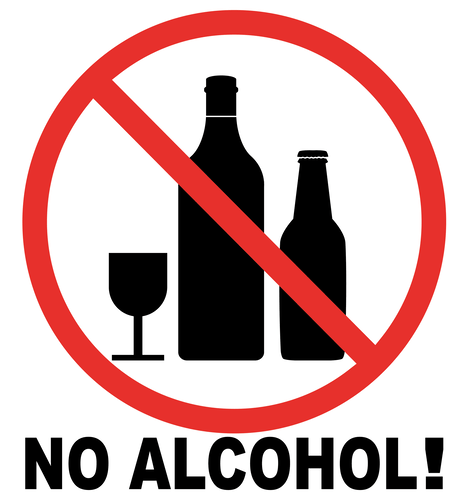
Signs of Drug Abuse and Alcohol Abuse Symptoms of Addiction
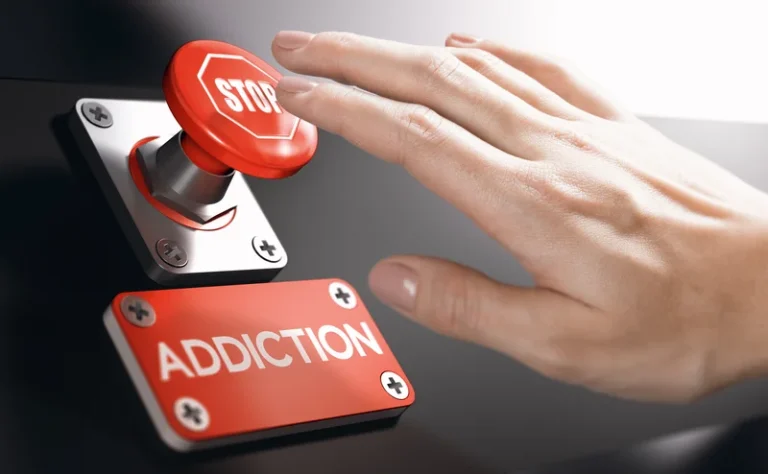
Many people with alcohol use disorder hesitate to get treatment because they don’t recognize that they have a substance abuse in older adults problem. An intervention from loved ones can help some people recognize and accept that they need professional help. If you’re concerned about someone who drinks too much, ask a professional experienced in alcohol treatment for advice on how to approach that person. Alcohol use disorder is a pattern of alcohol use that involves problems controlling your drinking, being preoccupied with alcohol or continuing to use alcohol even when it causes problems.
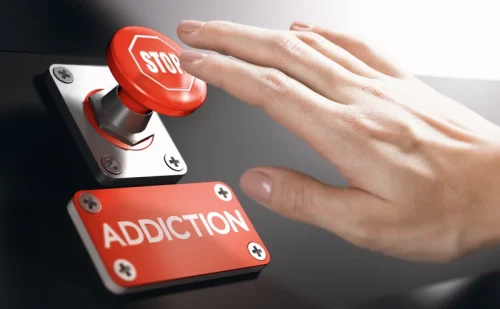
How to Prevent Addiction to Prescribed Painkillers

In life-threatening circumstances, an ambulance should usually be summoned by calling 911. You are not expected to know when a drug overdose is serious. The cause of a drug overdose is either by accidental overuse or by intentional misuse.
Causes and Risk Factors

When drug use becomes a priority in someone’s life, hygiene and outward appearance may become less and less important. Some may forget they haven’t taken care of themselves because of the mental effects of their drug use. Others simply stop caring as their time is consumed by the high and then getting more of their drug so they can get high again. This means the body becomes physically dependent on alcohol and it can lead to physical signs of alcoholism. Alcohol is one of the most widely abused substances in the US. According to the National Institute on Alcohol Abuse and Alcoholism, in 2012, 17 million adults ages 18 and older had alcohol use disorder in the United States.
Look for changes in health
- Participating in self-help programs, like Narcotics Anonymous, can also play a significant role in SUD treatment.
- We publish material that is researched, cited, edited and reviewed by licensed medical professionals.
- While naloxone has been on the market for years, a nasal spray (Narcan, Kloxxado) and an injectable form are now available, though they can be very expensive.
- In life-threatening circumstances, an ambulance should usually be summoned by calling 911.
- Healthcare professionals diagnose SUDs using criteria from the Diagnostic and Statistical Manual of Mental Disorders, 5th edition, text revision (DSM-5-TR).
If you notice that your loved one has a drastic change in their usual mood, either they are extremely euphoric or drowsy, it could indicate drug use. Drug and alcohol addictions are diseases, but they are treatable. The signs of hallucinogen use vary depending on the specific hallucinogen in question. LSD may cause a person to act impulsively and experience hallucinations.

Drug addiction can start with experimental use of a recreational drug in social situations, and, for some people, the drug use becomes more frequent. For others, particularly with opioids, drug addiction begins when they take prescribed medicines or receive them from others who have prescriptions. Sometimes substance abuse is the cause for such behavioral changes. Knowing if this is the case can be the difference between life and death. There are some tell-tale signs that can shed light on the issue and may lead to intervention and treatment. Many people struggling with addiction cannot support healthy relationships because their priority is drug use.
When you’re addicted, you may continue using the drug despite the harm it causes. It is currently estimated that about 10% of adults struggle with a substance abuse disorder. Though your loved one may not admit to having a drug problem, it is important to be able to recognize the signs of drug abuse. Opioids include both prescription painkillers, like Vicodin and OxyContin, and the illicit drug heroin. Signs of opioid abuse include overall sedation, memory issues, inability to concentrate, slowed reaction times, lethargy, and mood swings. Since opioids can slow the digestive system, users often experience constipation and other intestinal issues.
Conditions
Treatment doesn’t have to be voluntary to be successful. People who are pressured into treatment by their family, employer, or the legal system are just as likely to benefit as those who choose to enter treatment on their own. As they sober up and their thinking clears, many formerly resistant addicts decide they want to change. While naloxone has been on the market for years, a nasal spray (Narcan, Kloxxado) and an injectable form are now available, though they can be very expensive. Whatever the method of delivery, seek immediate medical care after using naloxone.
- These drugs can cause severe intoxication, which results in dangerous health effects or even death.
- You can get addicted to alcohol, nicotine, sleep and anti-anxiety medications, and other legal substances.
- At some point, addiction becomes a trap of endless repetition that loses whatever allure it once held.
- A person may have flushed skin and broken capillaries, particularly in the face.
Marijuana, hashish and other cannabis-containing substances
A provider can help you make adjustments throughout your life as needed. They release dopamine, a chemical in your brain that makes you feel good — until the substance wears off. Your brain and body want to continue this good feeling, even if it’s unhealthy. It can significantly impact your emotional well-being, relationships, education and career. Continued use of the substance may lead to changes in the brain’s structure and function.
From Curiosity to Dependence: The 4 Stages of Alcohol Misuse
People who have a dependence on alcohol exhibit some or all of the following characteristics. This change was made to challenge the idea that abuse was a mild and early phase of the illness and dependence was a more severe manifestation. For example, we have long been told that people need to hit “rock bottom” before they’ll get help, but this isn’t true. Anyone with an addiction can get help at any point if they feel it’s the right time. Samantha Green, a psychology graduate from the University of Hertfordshire, has a keen interest in the fields of mental health, wellness, and lifestyle.
Long-Term Behavioral and Physiological Consequences of Early Drinking
Frequently, alcohol misuse does not occur in isolation but alongside other mental health disorders, a situation known as co-occurring disorders or dual diagnosis. Common co-occurring conditions include depression, anxiety, bipolar disorder, and PTSD. Treatment for alcohol dependence in such cases must address both the addiction and the mental health condition to ensure a holistic recovery. This dual approach helps prevent relapse and promotes a more stable, long-term recovery.
- This means they can be especially helpful to individuals at risk for relapse to drinking.
- Referring to this condition as alcohol use disorder is more accurate and less stigmatizing.
- Several terms including ‘alcoholism’, ‘alcohol addiction’, ‘alcohol abuse’ and ‘problem drinking’ have been used in the past to describe disorders related to alcohol consumption.
- Likewise, if drinking or using drugs with others provides relief from social isolation, substance use behavior could be negatively reinforced.
Coping and support
- Although not directly comparable because of different methodology, a low level of access to treatment is regarded as one in ten (Rush, 1990).
- People who are alcohol dependent are often unable to take care of their health during drinking periods and are at high risk of developing a wide range of health problems because of their drinking (Rehm et al., 2003).
- Most medical schools only devote a few hours over four years to teaching addiction medicine, a mere fraction of the time devoted to other chronic diseases encountered in general practice [8].
- The involvement of these reward and habit neurocircuits helps explain the intense desire for the substance (craving) and the compulsive substance seeking that occurs when actively or previously addicted individuals are exposed to alcohol and/or drug cues in their surroundings.
- The basal ganglia, a part of our brain involved in habit formation, strengthens the association between drinking and the context in which it occurs.
If the responding is extinguished in these animals (i.e., they cease to respond because they receive neither the alcohol-related cues nor alcohol), presentation of a discriminative cue that previously signaled alcohol availability will reinstate alcohol-seeking behavior. A growing body of substance use research conducted with humans is complementing the work in animals. For example, human studies have benefited greatly from the use of brain-imaging technologies, such as magnetic resonance imaging (MRI) and positron emission tomography (PET) scans.

Alcohol and the Brain

The AAF for alcoholic liver disease and alcohol poisoning is 1 (or 100% alcohol attributable) (WHO, 2000). For other diseases such as cancer and heart disease the AAF is less than 1 (that is, partly attributable to alcohol) or 0 (that is, not attributable to alcohol). Also, as noted earlier, the risk with increasing levels of alcohol consumption is different for different health disorders. Risk of a given level of alcohol consumption is also related to gender, body weight, nutritional status, concurrent use of a range of medications, mental health status, contextual factors and social deprivation, amongst other factors. Therefore it is impossible to define a level at which alcohol is universally without risk of harm.
Those with moderate to severe alcohol use disorders generally require outside help to stop drinking. This could include detoxification, medical treatment, professional rehab or counseling, and/or self-help group support. Alcohol abuse was defined as a condition in which a person continues to drink despite recurrent social, interpersonal, health, or legal problems as a result of their alcohol use.
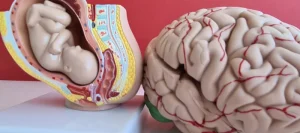

There is therefore some further progress needed to make alcohol treatment accessible throughout England. Alcohol dependence is also a category of mental disorder in DSM–IV (APA, 1994), although the criteria are slightly different from those used by ICD–10. For example a strong desire or compulsion to use substances is not included in DSM–IV, whereas more criteria relate to harmful consequences of use. It should be noted that DSM is currently under revision, but the final version of DSM–V will not be published until 2013 (APA, 2010). Unlike tolerance, which focuses on how much of the substance you need to feel its effect, physical dependence happens when your body starts to rely on the drug.
Can Tech Transform Recovery? Exploring the Latest Innovations in Addiction Treatment
Current practice in treating AUD does not reflect the diversity of pharmacologic options that have potential to provide benefit, and guidance for clinicians is limited. Few medications are approved for treatment of AUD, and these have exhibited small and/or inconsistent effects in broad patient populations with diverse drinking patterns. The need for continued research into the treatment of this disease is evident in order to provide patients with more specific and effective options. This review describes the neurobiological mechanisms of AUD that are amenable to treatment and drug therapies that target pathophysiological conditions of AUD to reduce drinking. In addition, current literature on pharmacologic (both approved and non-approved) treatment options for AUD offered in the United States and elsewhere are reviewed.
Both acute and chronic heavy drinking can contribute to a wide range of social problems including domestic violence and marital breakdown, child abuse and neglect, absenteeism and job loss (Drummond, 1990; Head et al., 2002; Velleman & Orford, 1999). Some studies using animal models involving repeated withdrawals have demonstrated altered sensitivity to treatment with medications designed to quell sensitized withdrawal symptoms (Becker and Veatch 2002; Knapp et al. 2007; Overstreet et al. 2007; Sommer et al. 2008; Veatch and Becker 2005). Moreover, after receiving some of these medications, animals exhibited lower relapse vulnerability and/or a reduced amount consumed once drinking was (re)-initiated (Ciccocioppo et al. 2003; Finn et al. physiological dependence on alcohol 2007; Funk et al. 2007; Walker and Koob 2008). Indeed, clinical investigations similarly have reported that a history of multiple detoxifications can impact responsiveness to and efficacy of various pharmacotherapeutics used to manage alcohol dependence (Malcolm et al. 2000, 2002, 2007). Future studies should focus on elucidating neural mechanisms underlying sensitization of symptoms that contribute to a negative emotional state resulting from repeated withdrawal experience. Such studies will undoubtedly reveal important insights that spark development of new and more effective treatment strategies for relapse prevention as well as aid people in controlling alcohol consumption that too often spirals out of control to excessive levels.
What are complications of drug abuse and addiction disorders?
Answer House Condos For Sale 10+ Answer House Pompano Beach, FL Condos For Sale
Four principles are key to motivational interviewing in Massachusetts. First, the therapist offers empathy for the client’s feelings and experiences. Second, they encourage the client to believe in themselves and their ability to change.
Adult program
Sober Living Houses (SLHs), aka sober homes or halfway houses, are safe, substance-free, supportive living facilities for those recovering from substance abuse. Ideal for those who’ve just been through inpatient or outpatient treatment, SLHs are supervised environments with rules that support sobriety, such as curfews, shared chores, and therapeutic meetings. Residents are also often trained on life skills and coping skills to make it easier to transition into society.
Reviews
SLHs also provide a strong sense of community that can lead to the kind of deep and lasting connections with other sober individuals that supports a new, healthy lifestyle. Inpatient rehab offers robust, hands-on care in a highly structured and supportive environment. The facility provides housing, meals, and round-the-clock supervision, allowing clients to focus exclusively on their recovery.
- When space becomes available, the Case Manager will be informed of the date/time of intake.
- During cognitive behavioral therapy in Massachusetts, clients work with a trained counselor to identify negative thinking patterns and change them.
- Addiction is a highly complex problem, and drug rehab in Massachusetts is often necessary to address it.
- Inpatient rehab offers robust, hands-on care in a highly structured and supportive environment.
- We do not receive any commission or fee that is dependent upon which treatment provider a caller chooses.
COMMUNITY VIDEO
During family therapy, the therapist works with every member of the family unit to understand the role they play in their loved one’s addiction. By addressing these patterns, family members learn healthier ways to interact with each other and contribute to a more effective recovery journey for the family member who is addicted. Group therapy is any therapeutic work that happens in a group (not one-on-one). There are a number of different group therapy modalities, including support groups, experiential therapy, psycho-education, and more.
Opioid rehabs specialize in supporting those recovering from opioid addiction. They treat those suffering from addiction to illegal opioids like heroin, as well as prescription drugs like oxycodone. These centers typically combine both physical as well as mental and emotional support to help stop addiction. Physical support often includes medical detox and subsequent medical support (including medication), and mental support includes in-depth therapy to address the underlying causes of addiction. Addiction is a highly complex problem, and drug rehab in Massachusetts is often necessary to address it. These programs treat physical, mental, and relational issues that are involved.
Therapists in Massachusetts offer individual therapy in a confidential setting to help you explore the complex factors that have contributed to your drug addiction. Using a tailored approach, your therapist supports you and utilizes evidence based treatment modalities to help you develop healthier thought patterns and behaviors. We place a strong Answer House Review emphasis on welcoming residents with disabilities, though our residents form a true mosaic of life, from all cultures and walks of life. We are a family; one that exists to help residents realize for themselves the potential within themselves and their lives after addiction. Finding with them the person they were, and the person they are yet to become, free of addiction.
Regular attendance at 12 step meetings, which are anonymous, free, and available daily, is expected. Trauma therapy addresses traumatic incidents from a client’s past that are likely affecting their present-day experience. The purpose of trauma therapy is to allow a patient to process trauma and move through and past it, with the help of trained and compassionate mental health professionals.
Rehab aftercare programs offer customized, wraparound support for clients in the maintenance phase of recovery. Many clients enroll in drug rehab immediately after completing intensive inpatient or residential care. Services encompass outpatient treatment but often extend long beyond the completion of a formal recovery program and typically include a variety of medical, mental health, and social service programs. Peer coaching, relapse prevention, 12 step program induction, and related services are commonly available.
Inpatient treatment typically involves intensive addiction counseling based on CBT, DBT, RBT, motivational interviewing, or other psychotherapeutic approaches. Many inpatient treatment centers also offer life skills training and/or complementary therapies, including meditation, mindfulness, and nutrition counseling. Many of those suffering from addiction also suffer from mental or emotional illnesses like schizophrenia, bipolar disorder, depression, or anxiety disorders. Outpatient Programs (OP) are for those seeking mental rehab or drug rehab, but who also stay at home every night. The main difference between outpatient treatment (OP) and intensive outpatient treatment (IOP) lies in the amount of hours the patient spends at the facility.



